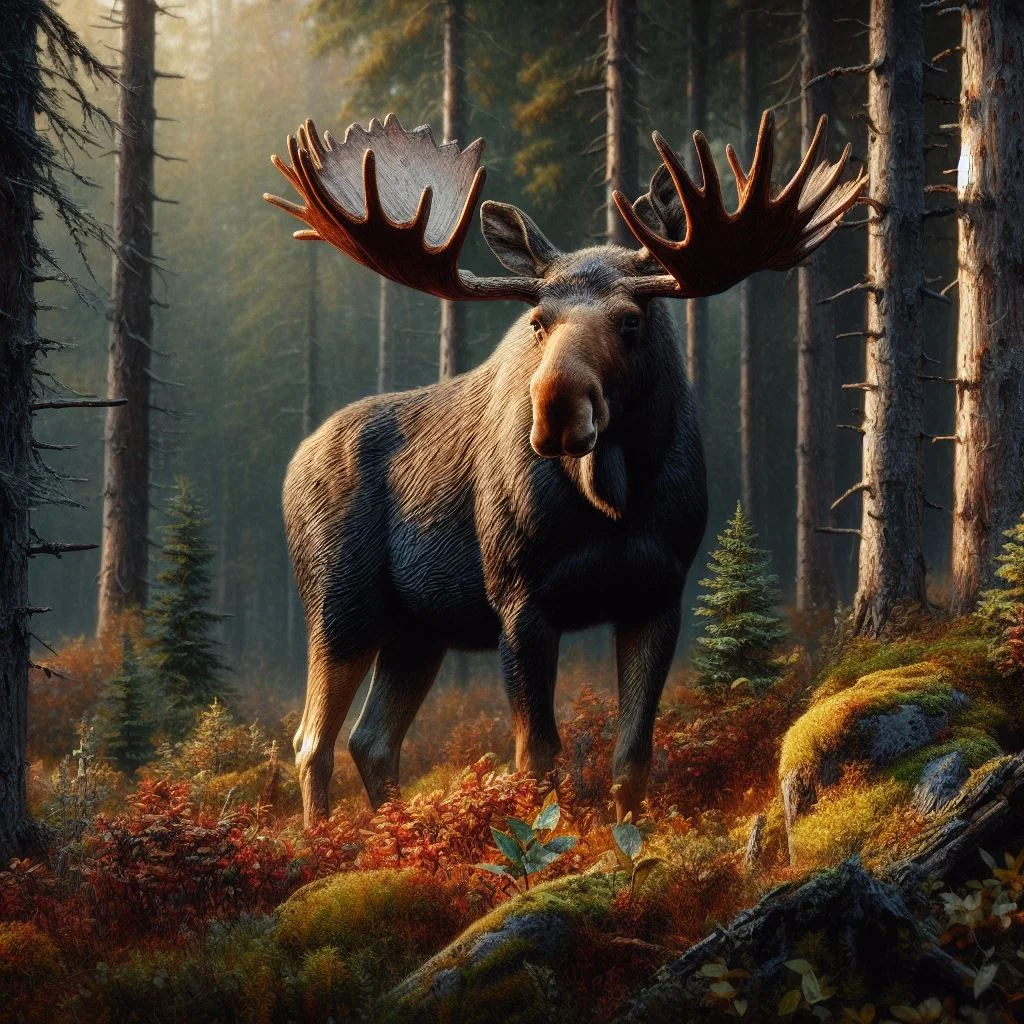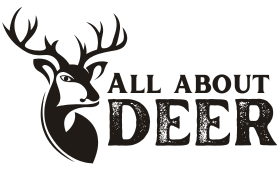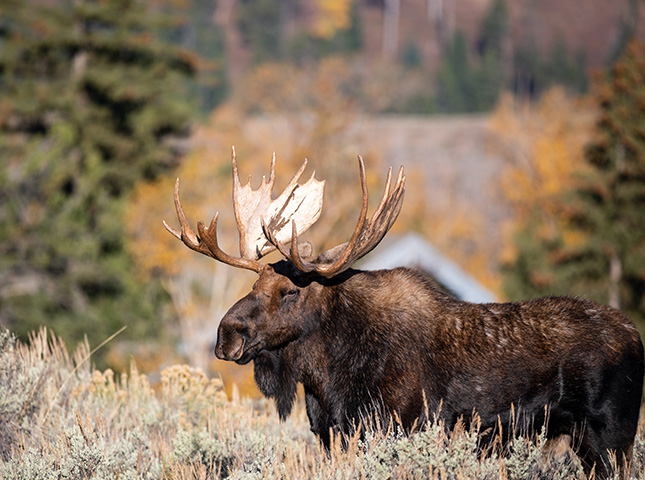Moose are among the most iconic animals of the Northern Hemisphere. Their massive size and distinctive antlers have intrigued humans for centuries. Often encountered in wilderness settings, understanding the size of a moose is vital for both nature enthusiasts and those who live in regions where moose roam freely.
Table of Contents
Key Takeaways
- Moose are the largest members of the deer family.
- Their size can vary based on factors such as age, gender, and geography.
- Male moose, or bulls, typically have large, broad antlers.
- Weight, height, and antler span are the three primary measures of a moose’s size.
Moose Size Facts and Figures
The size of a moose is not just about height and weight; it’s also about the unique features that come with being such a large animal:
- Antler Growth: A bull moose’s antlers can grow at an astonishing rate of up to an inch per day during the summer. By the time mating season rolls around, these antlers are fully grown, ready for display and combat.
- Leg Length: Moose have long legs, which not only support their massive bodies but also help them navigate deep snow and marshy lands with ease.
- Challenges of Size: Their enormous size isn’t always an advantage. Moose need to consume a significant amount of food daily to sustain their bulk. This often leads them to venture close to human habitats in search of food, especially during harsh winters.
Weight
On average, adult male moose, also known as bulls, weigh between 850 to 1,500 pounds (385 to 680 kilograms). However, some exceptionally large bulls can weigh as much as 1,800 pounds (816 kilograms). Female moose, referred to as cows, are lighter, with their weight ranging from 600 to 800 pounds (272 to 363 kilograms). Young moose, or calves, are born weighing approximately 25 to 35 pounds (11 to 16 kilograms) and grow rapidly in their first year.
| Age/Gender | Average Weight (lbs) | Average Weight (kg) |
|---|---|---|
| Bull (Male) | 850 – 1,500 | 385 – 680 |
| Cow (Female) | 600 – 800 | 272 – 363 |
| Calf | 25 – 35 | 11 – 16 |
Height
When it comes to height, moose are undoubtedly impressive. Measuring from their shoulders, they stand at an average height of 5 to 6.5 feet (1.5 to 2 meters). However, when you factor in their head and antlers, a full-grown bull can reach heights of up to 10 feet (3 meters).
| Age/Gender | Average Height (ft) | Average Height (m) |
|---|---|---|
| Bull (Male) | 6.5 – 7.5 | 2 – 2.3 |
| Cow (Female) | 5.5 – 6.5 | 1.7 – 2 |
| Calf | 2 – 3 | 0.6 – 0.9 |
Moose Size Comparison: Just How Big Are They?

Moose, belonging to the deer family, are the largest of their kind. Their size varies based on subspecies and the region they inhabit. For instance:
- Alaskan Moose: Found in Alaska and parts of western Yukon, these are the largest subspecies. Adult male Alaskan moose can stand over 7 feet tall at the shoulder and weigh up to 1,500 pounds. Their antlers alone can span 6 feet across!
- Eastern Moose: Found in the northeastern part of North America, they are slightly smaller than their Alaskan counterparts. Adult males typically weigh between 800 to 1,200 pounds.
- Shiras Moose: Inhabiting the Rocky Mountains and parts of the U.S. Pacific Northwest, these moose are the smallest subspecies in North America. Adult males weigh between 700 to 900 pounds.
Comparisons:
- Moose vs. Horses: While a horse might stand taller at the head due to its long neck, a moose often stands taller at the shoulder. This makes a moose larger and heavier than most horse breeds.
- Moose vs. Bison: Bison, often considered the giants of the plains, are hefty but not as tall as moose. An adult male moose can outweigh and outstand many bison.
- Moose vs. Humans: To put things in perspective, the average adult human stands around 5.5 to 6 feet tall. A full-grown moose can tower over most humans, making them truly colossal in comparison.
Geographic Variations
The size of a moose isn’t consistent across the globe. Different subspecies exist, with size often correlating with the environment and region in which they live.
Alaskan Moose
The Alaskan moose (Alces alces gigas) is the largest subspecies and is found primarily in the state of Alaska and Western Yukon in Canada. Males of this subspecies can weigh as much as 1,600 pounds (725 kilograms) and have antlers that span up to 6 feet (1.8 meters) across.
Eastern Moose
The Eastern moose (Alces alces americana) is found in the northeastern parts of North America. While they are smaller than their Alaskan cousins, bulls still reach an impressive weight of around 1,000 pounds (454 kilograms).
European Moose
Also known as the Eurasian elk in Europe, the European moose (Alces alces alces) is similar in size to the Eastern moose, with adult bulls weighing up to 1,000 pounds.
Shiras Moose
The smallest subspecies, the Shiras moose (Alces alces shirasi) is found in the Rocky Mountains and the adjacent areas of North America. Bulls of this subspecies typically weigh between 700 to 900 pounds (317 to 408 kilograms).
Antlers: A Sign of Majesty
A distinctive feature of male moose is their antlers. These structures not only add to the overall size and appearance of moose but also play a crucial role in mating displays and dominance battles.
Growth and Shedding
Antlers begin growing in the spring and are shed in the winter. This cycle occurs annually, with antlers growing larger as a bull moose gets older. Covered in a velvety skin during the growth phase, the antlers harden by late summer and the velvet is rubbed off.
Antler Size and Weight
The antlers of a full-grown Alaskan bull moose can span up to 6 feet (1.8 meters) and weigh up to 70 pounds (32 kilograms) per pair. However, the size of the antlers can vary greatly depending on the subspecies, age, and health of the individual moose.
| Subspecies | Average Antler Span (ft) | Average Antler Weight (lbs) |
|---|---|---|
| Alaskan Moose | Up to 6 | Up to 70 (pair) |
| Eastern Moose | 4.5 – 5.5 | 40 – 50 (pair) |
| European Moose | 4.5 – 5.5 | 40 – 50 (pair) |
| Shiras Moose | 4 – 5 | 30 – 40 (pair) |
Moose Size and Wildlife Conservation
The sheer size of moose plays a significant role in their ecological impact. Their feeding habits influence the vegetation of their habitats, promoting biodiversity. However, their size also makes them more susceptible to threats:
- Vehicle Collisions: Due to their tall stature, when a car hits a moose, it’s often the legs that are struck, causing the bulk of the moose to crash onto the vehicle’s windshield. This poses a significant danger to both the animal and the vehicle’s occupants.
- Habitat Encroachment: As human settlements expand, moose habitats shrink. This often leads to moose venturing into human areas, leading to potential conflicts.
The Role of Moose in Indigenous Cultures
Moose have been a part of North American indigenous cultures for centuries:
- Spiritual Significance: For many indigenous tribes, the moose holds spiritual significance. It is often seen as a symbol of strength, endurance, and longevity.
- Hunting and Sustenance: Moose have been hunted for their meat, which is a rich source of protein. Their hides have been used to make clothing and shelter, and their antlers have been used to make tools and ornaments.
- Conservation Efforts: Indigenous communities have been at the forefront of moose conservation efforts, understanding the importance of maintaining a balance between hunting and preservation.
Final Thoughts: The Majesty of the Moose
The moose, with its towering presence and gentle nature, is truly one of the wonders of the North American wilderness. Their size, combined with their ecological and cultural significance, makes them a treasure worth preserving. As we continue to learn more about these magnificent creatures, it’s crucial to ensure their protection and conservation for generations to come.
FAQs
1. How tall can a full-grown moose stand at the shoulder?
A full-grown moose can stand anywhere from 5 to 7.5 feet tall at the shoulder, depending on the subspecies and gender. The Alaskan moose, being the largest subspecies, often stands at the higher end of this range.
2. What is the average weight of a moose?
The weight of a moose varies significantly based on its age, gender, and subspecies. Adult female moose typically weigh between 800 to 1,300 pounds, while adult males can weigh anywhere from 1,200 to 1,500 pounds, with some exceptional individuals even surpassing this.
3. Do moose have any natural predators?
While adult moose have few natural predators due to their size, they can occasionally fall prey to wolves or bears, especially if they are sick or injured. Calves, on the other hand, are more vulnerable and can be targeted by wolves, bears, and even large birds of prey.
4. Are moose good swimmers?
Yes, moose are excellent swimmers. Their long legs allow them to wade into deep waters with ease. They can swim for several miles and even dive underwater to feed on aquatic plants. Their ability to swim also helps them escape from predators and navigate across water bodies during their migrations.


